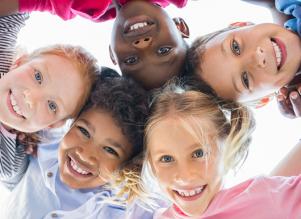4/16/2019
Mirrors and Doors: The Value of Choosing Diverse Books for Students
The title of a post from the curriculum and teacher resource site Teaching Tolerance does not beat around the bush: “We Still Need Diverse Books.” Written by third-grade teacher Noelle Walters, the post tackles the enduring, stubbornly relevant topic of the need to make classroom literature choices that are both high-quality and reflective of students’ lived experiences. “More and more educators are coming around to the need for diverse books,” Walters wrote before going on to note that the “importance of equity in literature and learning also finds support in research.”
More specifically, the research cited by Walters concerns human beings' natural impulse to organize the world—in both harmful and helpful ways—according to our own biases and stereotypes. While being able to make sense of the world through some type of categorizing or sorting is an “essential skill,” as Walters phrased it, this can lead to problems of “unconscious, implicit bias” wherein we prejudge others based on race, age, gender, and other identifying characteristics.
Although it may be impossible to rework or avoid every negative or potentially harmful stereotype, Walters argued that incorporating diverse books into teaching can go a long way toward creating positive, realistic images of people from all walks of life. Because Walters works with younger elementary school students, she and her colleagues have employed “diverse, multicultural picture books” as a teaching tool, which she has found works well in the classroom. “Picture books connect to our work in building an inclusive community and teaching our students that one part of any story or identity cannot tell the whole story,” she noted, before going on to detail that the goal is to provide “maps” for children that “help them search for their place in the world.” In her post, she provided a list of books she has personally used, along with a link to the We Need Diverse Books organization.
We Need Diverse Books is a nonprofit with a mission to “help produce and promote literature that reflects and honors the lives of all young people.” The group is focused on changing the publishing industry, as an overwhelming majority of children’s books currently feature white characters and white authors. Indeed, in 2017, National Public Radio reporter Leah Donnella found that fewer than 25 percent of children’s books published today center on the experiences of children and families of color—despite the fact that industry representatives have acknowledged that multicultural, multiracial books can be good for everyone by helping “young people learn to look beyond their own personal experiences.” Donnella's reporting echoes Walters’ view of diverse books as a necessary tool for both self-awareness and self-esteem, particularly for students from traditionally marginalized communities but ultimately for all students who would benefit from getting a broader look at the world.
Natasha Thornton, writing for the Edutopia website in 2018, referred to this experience as “windows, mirrors, and sliding doors” in a nod to the scholarship of Dr. Rudine Sims Bishop. The now retired Dr. Sims Bishop, who was a professor of education at Ohio State University, has written extensively about the value of multicultural literature and the impact it can have on students’ academic experiences. In her view, books can be windows into the lives of others, as well as mirrors that reflect who we are. Further, they can function as sliding doors that beckon readers to enter imaginative worlds created by an author. In theory, this is wonderful, but in practice, students are not all necessarily afforded the same opportunity to experience books in such a manner. More specifically, students who “cannot find themselves reflected in the books they read” or see “distorted, negative, or laughable” portrayals learn what Dr. Sims Bishop described as “a powerful lesson about how they are devalued in the society of which they are a part.”
Instead, Dr. Sims Bishop argued, “Our classrooms need to be places where all the children from all the cultures that make up the salad bowl of American society can find their mirrors.” Thornton’s 2018 Edutopia piece echoed this point—decades after Dr. Sims Bishop first made it—by stating that “if we were to take an inventory of classroom texts, curricula, and literacy materials across classrooms settings, we’d find that these instructional materials do not reflect the diversity of our students, let alone the diversity of our society.” Thornton then prompted her fellow teachers to make sure that their classroom literature collections, anchor texts, and literacy materials actually “mirror” their students’ lives. To help facilitate this, she provided links to publishers that offer a range of multicultural books for kids, such as Lee and Low, as well as more teacher-specific sites that walk teachers through the process of choosing high-quality, diverse books.
There are other teacher-to-teacher sites, such as writingmindset.org, that offer helpful guidelines for those searching for high-interest, diverse books designed to appeal to students across a range of reading levels, and Thornton also advised teachers to consider diversity for content-based courses, such as science and social studies. As former teacher Tom Berger put it, “no book shelf is going to represent the fullness of this nation,” but educators can and should still work to pull together resources and texts from a broad range of sources in order to deliver content through a multicultural lens. Ultimately, exposing students to stories and texts that both reflect and challenge their own experiences is a good place to start, and Berger himself provided a list of nearly two dozen diverse books for kids and teachers to consider. Take a look!


